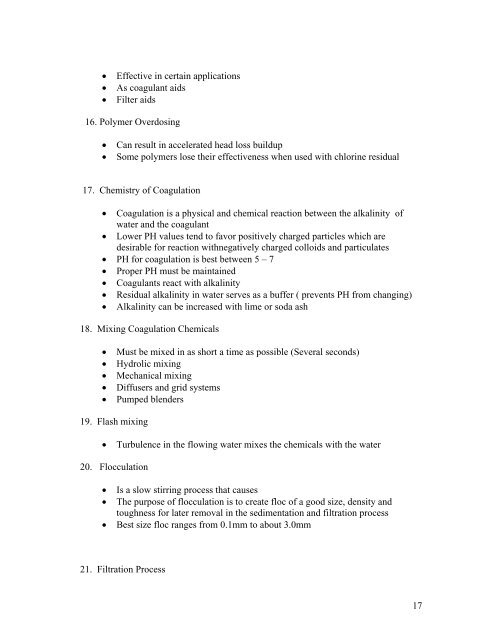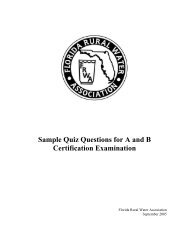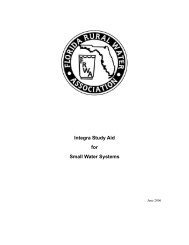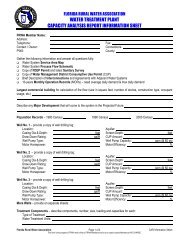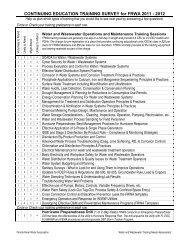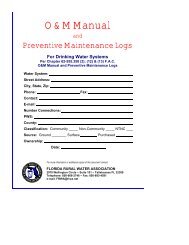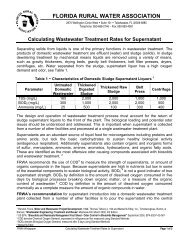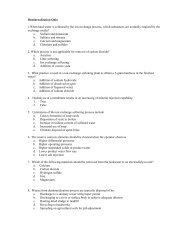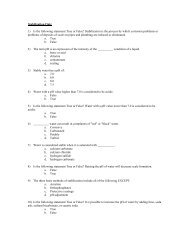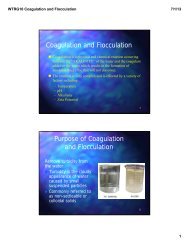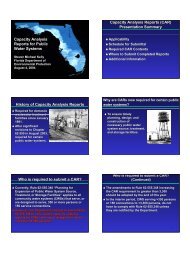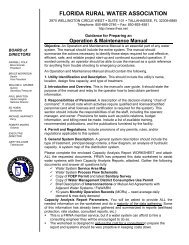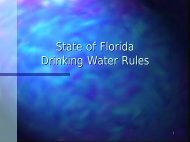The Taylor Tutorial - Florida Rural Water Association
The Taylor Tutorial - Florida Rural Water Association
The Taylor Tutorial - Florida Rural Water Association
Create successful ePaper yourself
Turn your PDF publications into a flip-book with our unique Google optimized e-Paper software.
• Effective in certain applications• As coagulant aids• Filter aids16. Polymer Overdosing• Can result in accelerated head loss buildup• Some polymers lose their effectiveness when used with chlorine residual17. Chemistry of Coagulation• Coagulation is a physical and chemical reaction between the alkalinity ofwater and the coagulant• Lower PH values tend to favor positively charged particles which aredesirable for reaction withnegatively charged colloids and particulates• PH for coagulation is best between 5 – 7• Proper PH must be maintained• Coagulants react with alkalinity• Residual alkalinity in water serves as a buffer ( prevents PH from changing)• Alkalinity can be increased with lime or soda ash18. Mixing Coagulation Chemicals• Must be mixed in as short a time as possible (Several seconds)• Hydrolic mixing• Mechanical mixing• Diffusers and grid systems• Pumped blenders19. Flash mixing• Turbulence in the flowing water mixes the chemicals with the water20. Flocculation• Is a slow stirring process that causes• <strong>The</strong> purpose of flocculation is to create floc of a good size, density andtoughness for later removal in the sedimentation and filtration process• Best size floc ranges from 0.1mm to about 3.0mm21. Filtration Process17


